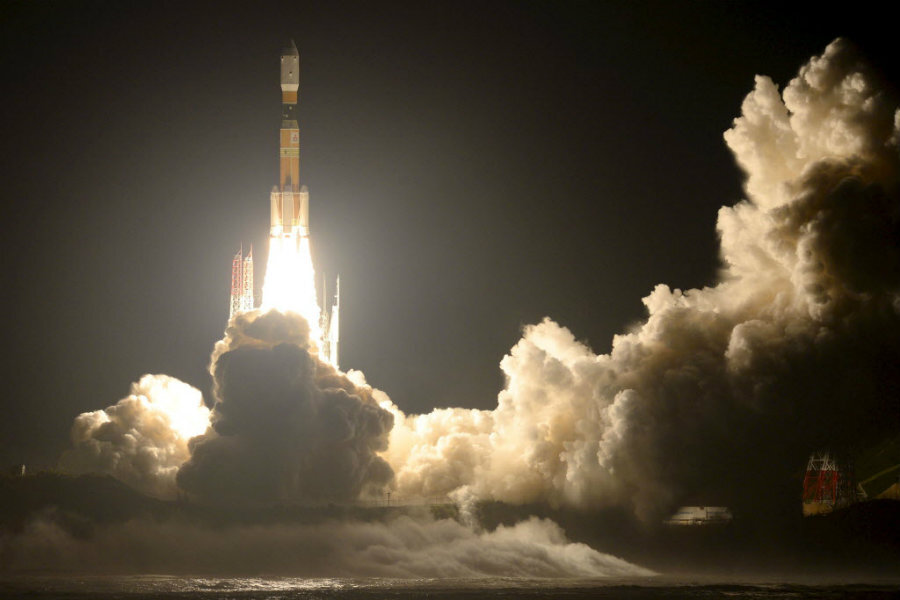Japan saves the day? Cargo ship ferries supplies to space station
Loading...
A robotic Japanese cargo ship pulled up to the International Space Station early Monday, completing a five-day journey to deliver essential supplies and equipment to the astronauts aboard.
The Japan Aerospace Exploration Agency’s (JAXA) Kounotori 5 H-II Transfer Vehicle, known more simply as HTV-5, arrived at the ISS around 7 a.m. Eastern time, when astronauts inside the space station captured the vessel using a robotic arm, according to NASA. Among the items in the HTV’s hold are food and provisions to keep the crew stocked through the end of 2015, as well as equipment needed for scheduled experiments and other research.
“HTV-5 capture was successful!” space station astronaut Kimiya Yui of Japan, who manned the robotic arm with NASA astronaut Kjell Lindgren, tweeted Monday morning. “Thank you all for your support and hard work!"
While resupply missions are vital to the space station in general, the HTV’s successful launch on Wednesday, as well as its safe journey and berthing, were especially critical in the face of subsequent Russian and US launch failures in April and June that lost more than 10,000 pounds of ISS-bound supplies and equipment, according to CBS News.
Though the Russians successfully launched and docked an unmanned Progress spacecraft in early July, the arrival of the HTV-5 “will boost the lab's reserves to more comfortable margins while bringing a variety of needed research equipment to the station along with a galley for the U.S. segment of the outpost,” CBS reported.
The cargo manifest, which JAXA and NASA adjusted to make up for the items lost during the spring’s failed missions, include:
- The 1,400-pound CALorimetric Electron Telescope (CALET), to be used for a mission that will search for signatures of dark matter and analyze cosmic rays. The investigation seeks to address many unresolved questions that have puzzled astrophysicists for decades, “such as the origin of cosmic rays, how cosmic rays accelerate and travel across the galaxy, and whether dark matter and nearby cosmic ray sources exist,” NASA reported.
- A flock of 14 Dove satellites that have the capacity for taking images of Earth for humanitarian, environmental, and commercial uses.
- A dozen mice, housed in compartments that can shift between microgravity and Earth gravity, that are part of an experiment on weightlessness during long space missions, NBC News reported.
- A variety of whiskey samples sent by Japanese distillery Suntory as part of a one-year study on how microgravity conditions can affect the beverages’ “mellowness,” according to the company.
The HTV-5 is set to spend five weeks attached to the ISS before the vessel will be filled with trash, detached from the station, and sent to burn up in Earth’s atmosphere, NASA said.






